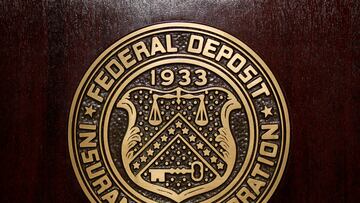What should you do if your bank collapses? What happens to your money?
During the Great Depression a series of bank runs created the necessity to restore faith in the US banking system which led to the creation of the FDIC.

The collapse of Republic First Bank, a Pennsylvania-based financial institution, has once again raised concerns about what would happen to customers’ money when such instances occur. The bank was federally insured, with the Federal Deposit Insurance Corporation (FDIC) covering customers’ deposits by transferring them to Fulton Bank after an agreement was reached with the federal agency.
However, the FDIC only covers insured deposits and financial instruments up to a certain limit.
READ ALSO: 5 fees charged by US banks that you should know about
Philadelphia-based Republic Bank was closed late today by Pennsylvania bank regulators, which appointed the FDIC as receiver. To protect depositors, we entered into an agreement with Fulton Bank to assume substantially all deposits and assets of Republic.https://t.co/Fzusk2L74Q pic.twitter.com/b91USjtr4Z
— FDIC (@FDICgov) April 26, 2024
What happens to your money if a bank collapses?
The specter of a bank collapsing is one of depositors’ greatest fears, that your money will be out of reach. That was the driving force behind the creation of the FDIC in 1933 by the Franklin Delano Roosevelt administration after a series of bank runs during the Great Depression. The FDIC insures deposits at most banks and savings associations in the U.S.
The agency collects insurance premiums from banks so that in the event that a bank becomes insolvent, deposits at the financial institution are guaranteed up to a limit, at no expense to the US taxpayer.
The standard deposit insurance coverage limit is $250,000 per depositor, per ownership category, per FDIC bank. So if you have accounts in more than one ownership category you may be eligible for more than the current minimum of $250,000 in protection at a single FDIC-insured bank. Should you have money at another FDIC-insured bank, you would also be eligible for the minimum coverage for that institution too, even if you already had to file a previous claim at a different failed bank.
The FDIC will send you a notification in the event that your bank fails. You can contact the FDIC directly or visit their website for information on how to file a claim and recover your insured deposits.
However, not all financial products offered by a bank are covered by FDIC insurance such as annuities and mutual funds, nor stocks and bonds including municipal securities. Contents of safe deposit boxes are not insured, but holders are typically granted access the first business day after the bank closure.
READ ALSO: Economists warn that more bank failures could be on the horizon
When will the FDIC make payments of insured deposits?
Related stories

Michelin star but Disney like kids
In the event that a deposit payoff is necessary, the FDIC is required under law to make payments of insured deposits “as soon as possible” and according to the agency the goal is within two business days. For funds in excess of the insured amount, the depositor will receive a “Receiver’s Certificate” which is a claim against the estate of the failed bank for those funds. As the closed bank’s assets are liquidated, the depositor would receive payments on their claim.
But the FDIC will first try to perform a “Purchase and Assumption Transaction” process. Through this method, the agency tries to arrange the transfer of depositors’ insured accounts to a healthy bank, whereby they would have access to their insured funds. In this scenario, there’s a good chance that all a depositor’s funds will be safe. Loans and other assets may also be purchased by the “assuming bank.”

Complete your personal details to comment